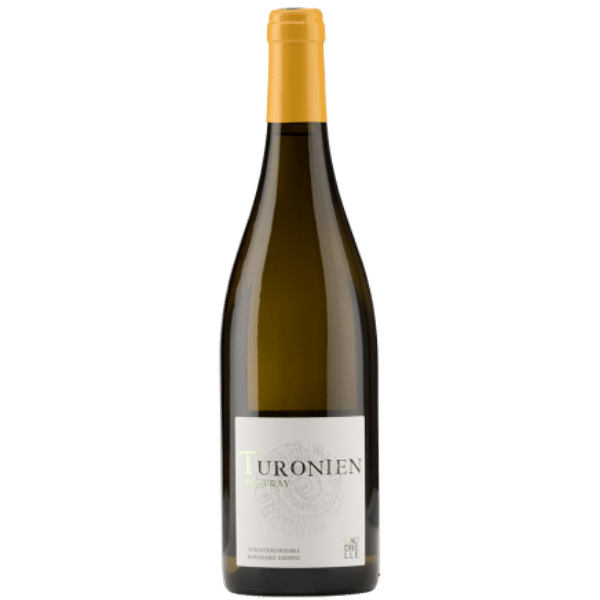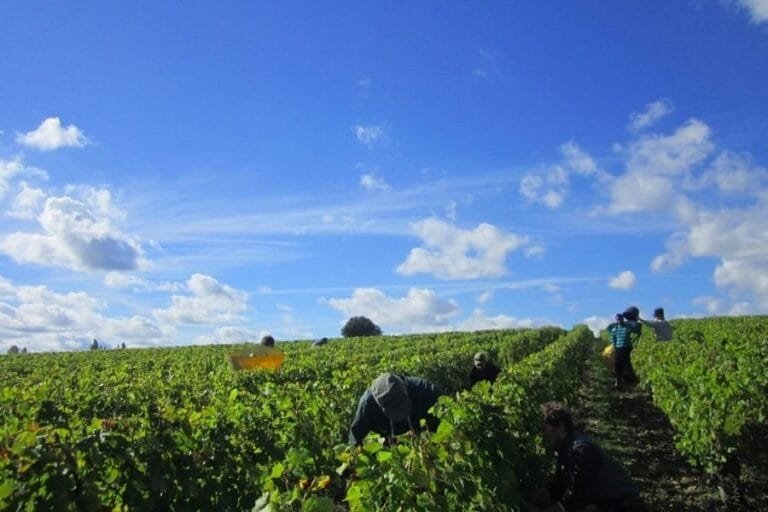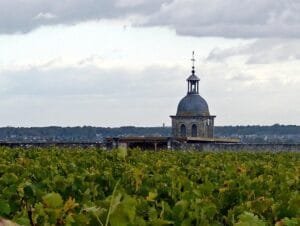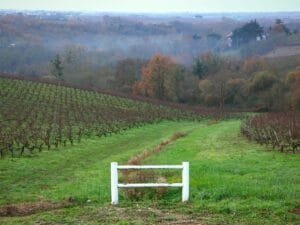Personally, I would phrase the question differently. First of all because both aren’t produced from the same grape, so no, really they cannot be compared. But when I have to chose between run of the mill Champagne and a top notch Vouvray, I will always opt for the sparkling Vouvray.
However the “Vouvray vs Champagne” argument misses the point. Because there is so much more about Vouvray wines. Because the region also produces a wide range of styles : from dry to richly sweet “Sauternes” type wines, each with their own personality.
Understanding the Vouvray appellation means understanding this diversity of styles. And at the origins of such diversity : the exceptional terroir that produces Vouvray wines.
The lands of Vouvray are located a few kilometers east of the capital city of the Loire valley : Tours. The Vouvray appellation covers 8 villages of the northern bank of the Loire river (rive droite for the locals).The most emblematic villages are Rochecorbon, Vernou sur Brenne and of course Vouvray, which gave its name to the appellation. It is not a huge piece of land, only a few thousand acres in total. But wine here is the raison d’être of the area. There are no less than 160 wineries in the appellation!
The full tasting tour may take more than a couple of days. Plan ahead!
Understanding the geology of the region helps understanding the diversity of Vouvray wines
The first impression when you arrive in Rochecorbon coming from Tours is : where are the vines? The road along the Loire gives only two things to see : the river on the right, the hill on the left. The region has a very particular geological history, which gives its specificity to the terroir… and therefore to the wines.
To find the vineyards you need to climb the hill. The vine covers the top of the white chalk hills of the Turonian era (many many years ago). These hillsides are covered with perruche, a clay that gives the mineral character to the white wines and aubuis, a limestone rock which gives its power to the sweet wines of Vouvray

For the aging of their wines, the Vouvray winegrowers have magnificent troglodyte cellars that are dug directly in the chalk of the hillside. Some offer magnificent sculpted walls (e.g. those of Bourillon Dorléans).
These cellars maintain a constant temperature of 12°-13°C: the ideal temperature for storing wine. Granted, the Vouvray soils are exceptional. But there is also the particular climatic situation of the area. Vouvray is at the center of an oceanic and continental influence, where sea and land winds meet.
And in the middle? A river runs through it: the Loire, which acts as a formidable natural thermal regulator.

A single grape variety for Vouvray wines : Chenin Blanc
Vouvray wines are produced from a single grape variety : Chenin Blanc (do not pronounce the “c” at the end of “blanc”, please). You may prefer to call it “Pineau de la Loire”.
It is also valid, and maybe somewhat easier to pronounce. This grape was imported from continental Europe more than a millennium ago. A local legend even attributes its paternity to Saint Martin.
The magic of Vouvray wines? Forrest Gump would put it this way: “Life is like a box of chocolates. You never know what you’re gonna get.” The same applies to Vouvray wines. They can be vinified in many ways :
- Sparkling wines (the French say “pétillant” or in a more refined style “fine bulles” i.e. “fine bubbles”)
- Dry white wines (the locals say “vins tranquilles” or “easy-going wines”)
- Lightly sweet wines (also referred to as “vins tendres” or “tender wines”), that can be just great as an aperitif, with desserts, and also on a spicy dish (READ : Loire Valley wines take the spicy Thai challenge)
- Sweet to richly sweet wines, according to the amount of natural sugars in the harvested grapes
The shared characteristics of Vouvray wines are their golden colours and always bright in appearance.. All that glitters is not gold except with … Vouvray wines! As for the taste, chenin is renowned for its mineral expressions of chalk and flint (back to geology).
To understand how the vineyard’s type of soil affects its wines here in this excellent post : Understanding Perceived Minerality in Wine. In their youth, Vouvray wine reveal aromas of pear and ripe quince, with notes of acacia honey, candied fruit. Cedars, also. Some have even spicy touches of ginger!
As they grow, the aromas of chenin evolve towards honey, even truffle, while keeping its lovable fruity and candied touch. For more reading on the magic of the chenin grape, go read Laura Walsh’s great post on sweirlingdervish.com : Savennières and Vouvray: Two Tastes of Loire Valley Chenin Blanc.

Play now : Vouvray wines quiz
If you have come this far in your reading, the quiz should be easy as pie. Read to test your knowledge on this “Ligerian” region? (in French “ligérien” is the adjective of the word “Loire”)
How many winegrowers are there in the Vouvray region?
There are 160 (that was an easy start).
What part of the production between still and sparkling wines?
60% sparkling wines for 40% still wines (anyway that’s a lot of both)
How many bottles produced every year in the Vouvray appellation?
15 million (I told you it was a lot). And 2 still wine bottles out of 3 are sold abroad.
At what temperature should Vouvray wines be served?
– 11° to 12°C for sparkling, tender and sweet wines – 8°C for dry whites
For how long can Vouvray wines keep?
This may seem wrong, but it isn’t : Vouvray still wines can be kept for 10 years up to … several decades.
During a wine tasting session, you may be presented with an older Vouvray. Once the acidity has subdued (like a bear in the winter, curled up at the bottom of its den), nothing remains but the pure expression of the wine, a divine essence…
The proof below with tis wine cork of a 1964 Vouvray (opened in 2014 : 50 years old and still kicking, magic!)









